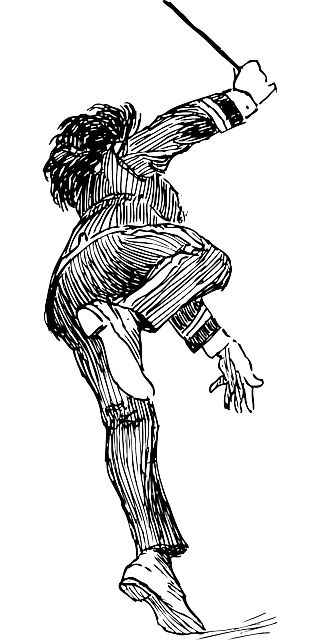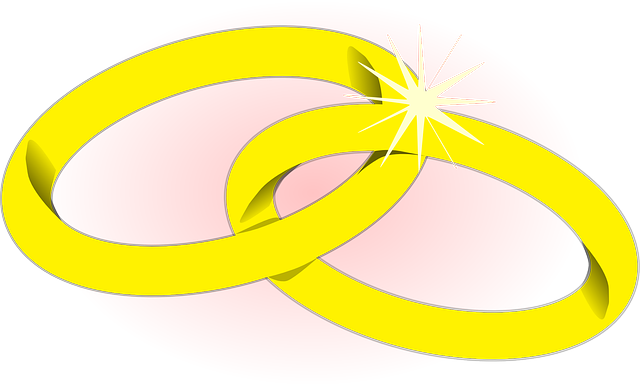قائمة الكوارث العسكرية
In this list a military disaster is the unexpected and sound defeat of one side in a battle or war, sometimes changing the course of history.
Military disasters in this list can range from a strong army losing a major battle against a clearly inferior force, to an army being surprised and defeated by a clearly superior force, to a seemingly evenly matched conflict with an extremely one sided result. A military disaster could be due to bad planning, bad execution, bad weather, general lack of skill or ability, the failure of a new piece of military technology, a major blunder, a brilliant move on the part of the enemy, or simply the unexpected presence of an overwhelming enemy force.
One definition of military disaster describes the presence of two or three factors:
- chronic mission failure (the key factor)
- successful enemy action,
- (less significant) total degeneration of a force’s command and control structure
According to this definition, two particular characteristics are not necessary for an event to be classified as a military disaster:
- enormous loss of life
- having greater casualties than the enemy
-
التعديلات والإضافات المدعومة بمراجع مرحب بها.
العصر القديم
- معركة ماراثون في 490 BC, when a large Persian force was destroyed and routed by a smaller Athenian force.
- Battle of Salamis in 480 BC, where a huge Persian fleet was defeated by a united Greek force.
- Athenian expedition to Syracuse in 415 BC.
- Battle of Changping (262–260 BC), in which 400,000 captured troops from State of Zhao were buried alive after their commander Zhao Kuo fell for a trick of the commander from State of Qin.
- Battle of the Trebia in 218 BC, where Hannibal destroyedثمانية Roman legions and Allied armies in the first major battle of Second Punic War.
- Battle of Lake Trasimene in 217 BC, where 30,000 Roman soldiers were ambushed by Hannibal with army of over 50,000 in the largest ambush in history.
- Battle of Cannae in 216 BC, where Hannibal destroyed the 16 Roman and Allied legions led by Lucius Aemilius Paullus and Gaius Terentius Varro. In all, perhaps more than 80 percent of the entire Roman army was dead or captured (including Paullus himself).
- Battle of Julu in 207 BC where Chu forces under Xiang Yu defeated a much larger Qin army. Qin's losses mounted to well over 100,000. The Qin dynasty collapsed soon after.
- Battle of Ilipa in 206 BC, when an army of 48,000 Romans under Scipio Africanus surrounded and destroyed the Carthaginian army of 54,000.
- Battle of Utica in 203 BC, where a Carthaginian army of 100,000 was smashed byسبعة legions under Scipio Africanus.
- معركة زاما في 202 BC, when a Roman army of 34,000 under Scipio Africanus annihilated the Carthaginian army of 50,000 under Hannibal, thus bringing an end to Second Punic War.
- Battle of Mobei in 119 BC, where the entire Xiongnu army of over 100,000 men was destroyed by Han army. This battle and its aftermath ensured the supremacy of the Chinese over the northern barbarian tribes for the next few hundred years.
- Battle of Arausio in 105 BC, when the allied armies of Cimbri and Teutones killed 120,000 Romans in one afternoon.
- Battle of Carrhae in 53 BC, when Crassus with 40,000 soldiers marched into Parthia, expecting to be victorious, chose to march a direct route through the desert instead of the mountains of the north. His army was entirely anniliated by 9,000 Parthian soldiers
- Siege of Alesia in 52 BC, where Gaius Julius Caesar, leading roughly 50,000 Roman soldiers, laid siege to a rebel Gaul army consisting of roughly 85,000 infantrymen and 15,000 cavalry led under Vercingetorix in the fortress of Alesia. Belgae tribe attempted to relieve the siege with an army of 260,000 warriors. Romans, through the personal leadership of Titus Labienus, wrought a terrific slaughter upon the Belgae; this demoralising event led the defenders at Alesia to yield, ending Vercingetorix's rebellion.
- Battle of Philippi in 42 BC, where an enormous army of 226,000 men (including Auxiliaries) under Second Triumvirate destroyed the 187,000 strong force under Liberators. This left the Second Triumvirate in sole control of Rome.
- معركة أكتيوم in 31 BC, where the navy of Octavianus defeated the navy of Mark Antony and Cleopatra. Octavian, left in sole control of Rome, would later become Augustus, Rome's first Emperor.
- Battle of Teutoburg Forest inتسعة AD, where Germanic warriors destroyed three Roman legions.
- Battle of Watling Street in 60 or 61 AD, where, as Tacitus and Cassius Dio suggest, between 100,000 and 230,000 British warriors and tribes people led by the British Iceni queen Boudicca, faced off against 10,000 Roman soldiers led by the governor of the British province, Gaius Suetonius Paulinus. The result was an overwhelming defeat of the Britons. There was a rumour of 80,000 Britons left dead on the battlefield, while around 400 Romans were dead according to Tacitus, thus ending the British rebellion that had devastated Roman-British provincial towns in southern Britain.
- Battle of Guandu in 200 AD, in which the more powerful army of Yuan Shao failed to guard its supplies, and was defeated by Cao Cao.
- Battle of Red Cliffs in 208 AD, where Liu Bei's and Sun Quan's combined force destroyed Cao Cao's much larger navy with fire.
- Battle of Edessa, when Emperor Valeria, in 259 AD.,n with a 70,000-strong Roman army marched into Persia to end Persian advances into Roman territory. The outcome was an overwhelming Persian victory and the entire Roman army was decimated.
- Julian's Persian War in 363 AD, in which the Roman Emperor Julian invaded the Sassanian Empire under Shapur II, gaining initial tactical victories, but soon being lured into the interior of the Empire, leaving his army trapped and unable to escape. Julian himself perished and his successor, Emperor Jovian, was forced to sign one of the most humiliating peace treaties in Roman history in order to save the remnants of the Roman army.
- Battle of Adrianople in 378 AD, in which emperor Valens was killed while Gothic heavy cavalry ambushed and decimated his Roman heavy infantry.
العصور الوسطى
- معركة سالسوin 612, during the second Goguryeo-Sui War, between the Korean kingdom of Goguryeo and the Chinese Sui Dynasty. Goguryeo cavalry forces defeated the massive Sui army at the Salsu River(Chongchon River).
- معركة اليرموك in 636, where the bulk of the Byzantine military along with their Christian Arab allies are destroyed.
- معركة القادسية in 636, in which the Arab Muslim army decisively defeated the larger Sassanid Persian army, resulting in the Islamic conquest of Persia.
- Battle of Tours in 732. The Muslim Moors marched into France meeting no foes, until encountering the Christian Frankish forces led by Charles Martel at Tours. Despite the Moorish advantage over the Franks militarily, they were defeated decisively by the Franks.
- معركة أخيلوس 917. An enormous Byzantine army of 110,000 men was tactically outwitted by a smaller Bulgarian force, causing the death of 90,000 soldiers, 70,000 of whom were Byzantines in one of the bloodiest battles in Middle Ages. The bones of tens of thousands who perished could be seen on the battlefield 75 years later.
- Battle of Stamford Bridge in 1066. A Norwegian army under king Harald Hardrada is destroyed by an Anglo-Saxon army under King Harold Godwinson. The battle is so costly for the Norwegians that only a fraction of the fleet used to transport the army is needed to pick up the survivors.
- Battle of Hastings in 1066. Anglo-Saxon King Harold is slain in battle against Normans led by William the Conqueror, resulting in Norman Conquest of England.
- معركة ملاذكرد in 1071. Byzantine Empire suffers a humiliating defeat at the hands of Seljuks, resulting in the capture of Emperor Romanos IV.
- Battle of Hattin in 1187, where overconfident Crusader forces from Jerusalem became trapped in a waterless desert area, and thus became easy prey for Saracen forces of Salah-ud-din (Saladin)
- Battle of Kalka River, 1223. A Mongol army obliterates an allied Kievan-Rus'/Cuman army at a river crossing on the Kalka in the Ukraine. The Mongols draw the Russo-Cuman force out until they are overextended, then attack with their heavy cavalry and destroy the allied forces in detail. The Mongols capture several Russian princes and ritually execute them by crushing them beneath a feasting table on which the Mongol leaders dance and feast.
- Battle of Legnica, 1241. A Mongol army under Baidar crushes an allied force of Poles, Germans, Bohemians, crusaders and mercenaries under King Henry II the Pious of Poland. Poor discipline within the allied ranks allows the Mongols to destroy first the knights and then the infantry. Henry II is killed, as are many nobles and princes, and most of the allied army except for the Bohemian contingent, which the Mongol army decides not to pursue having incurred heavy casualties.
- Battle of Stirling Bridge in 1297. English Earl John de Warenne's well-equipped army were trapped on a narrow bridge by William Wallace's 15,000 unarmored, lightly armed Scots, bearing the traditional long spears of lowland Scotland. The bridge had been chosen as the point of engagement by Warenne, even though the river could easily have been forded just a few miles upstream.
- Battle of the Golden Spurs in 1302, Flemish foot militia defeat a superior French army through the mass use of pikes in assembles into schiltrons.
- Battle of Bannockburn in 1314. A Scottish army of around 7000 men under King Robert I defeats a roughly 20,000-strong English army near Stirling Castle. The English knights fail to penetrate schiltrons of Scottish spearmen on the first day, and are routed completely the next day when Robert decides to counter-attack. King Edward II of England only narrowly escapes capture, and some of England's most important nobles are killed or captured.
- Battle of Nicopolis in 1396 was the rout of an allied army of Hungarian, Wallachian, French, Burgundian, German and assorted troops at the hands of an Ottoman force in modern-day Bulgaria. It is often referred to as the Crusade of Nicopolis and was the last large-scale crusade of the Middle Ages.
- Battle of Agincourt in 1415. A large French army, with a large contingent of knights, was defeated by Henry V's much smaller army, which included the famed English longbowmen.
- Tumu Crisis in 1449. A very large force (500,000) of the Ming dynasty were defeated by a very small army (20,000) of Mongols, and Zhengtong Emperor of the Ming dynasty was captured. This battle is regarded as the greatest military debacle of the entire Chinese history. There is a legend that Zhengtong Emperor had been working as a herder during the capture in Mongol.
القرن السادس عشر
- Battle of Cochin in 1504. 140 Portuguese and 200–1000 Cochinese fended off an army of 57,000–84,000 Indians, securing the continued presence of the Portuguese in India.
- Battle of Flodden Field in 1513. A Scottish invasion of England is defeated, resulting in the death of the King James IV of Scotland
- First battle of Panipat in 1526. Babur sacked Delhi and defeated Ibrahim Lodhi.
- حصار ڤيينا in 1529 marked the height of the Ottoman Empire. سليمان القانوني failed to capture the city, despite significant advantages in manpower.
- معركة سولواي موس in 1542. 15,000–18,000 Scottish troops were defeated by 3,000 English after becoming trapped in a bog.
- Battle of Okehazama in 1560. Imagawa Yashimoto's invasion of Owari province halted completely, after being ambushed by Oda Nobunaga's force during the night, leading to large casualties, many officers (including Yashimoto) dying, and his army being forced into a rout and eventually disememberment.
- Great Siege of Malta in 1565. The siege resulted in catastrophe for the Ottoman Empire.
- Battle of Lepanto in 1571. Holy League's fleet defeated Ottoman fleet in one of the largest naval battles of human history. The Ottomans lost 240 ships (out of about 300), while the League lost 12 of their 210 ships.
- Spanish Armada in 1588. An English fleet sends fire ships into the Spanish invasion fleet destroying some and scattering the rest effectively ending the invasion threat. The Armada would later run into storms and almost half the ships never returned to Spain, as well as more than half the troops.
- English Armada in 1589, where the English fleet was defeated by the recovering Spanish fleet. This allowed the Spanish fleet to quickly recover and maintained their shipping from the Americas.
- Battle of the Yellow Ford in 1598. An English force of 4000 is defeated by Irish defenders under Hugh O'Neill and defeated. This temporarily put Ireland out of English control, allowing the rebellion to spread throughout Ireland.
- Battle of Myeongnyang, on October 26, 1597, the Korean Joseon Navy, led by Admiral Yi Sun-sin, fought the Japanese navy in the Myeongnyang Strait, near Jindo Island, off the southwest point of the Korean peninsula. With 13 ships remaining from Admiral Won Gyun's disastrous defeat at the Battle of Chilchonryang, Admiral Yi held the strait as a "Last Stand" battle against a fleet of 133 Japanese warships and at least 200 logistical support ship
القرن السابع عشر
- الغارة على المدواي in June 1667. A Dutch fleet led by Michiel de Ruyter sailed up the river Medway and attacked the English fleet laying at anchor at their home base of Chatham. Ending in a decisive victory for the Dutch, and an unfavorable peace for the British in Second Anglo-Dutch War.
- Battle of Saraighat in March 1671. Ahoms under their general Lachit Borphukan defeated Rajput general Ram Singh`s Mughal imperial forces consisting of 4,000 troopers (from his char-hazaari mansab), 1,500 ahadis and 500 barqandezes by an additional 30,000 infantrymen, 21 Rajput chiefs (Thakurs) with their contingents, 18,000 cavalry, 2,000 archers and shieldmen and 40 ships.
- معركة نارڤا in November 1700, where the city of Narva was under siege by a Russian force of 37,000 men, led by Charles Eugène de Croy. A blizzard against the Russian side allowed a Swedish army, led by كارل الثاني عشر من السويد, to win despite having only 12,000 men.
القرن الثامن عشر
- معركة پولتاڤا in June 1709. Charles XII of Sweden's disastrous defeat ended his wintertime march on Moscow during الحرب الشمالية العظمى and marked the beginning of the end of Swedish Empire.
- Battle of the Salween River in September 1718. An entire Qing army was destroyed by Zunghar Mongols.
- Battle of Karnal in 1739 was a battle in which an invading Persian army under the military genius Nader Shah decimated a much larger Mughal army in a matter of hours and thereby subdued the Mughal Emperor Muhammad Shah, making him a vassal of Nader Shah's.
- Battle of Cartagena de Indias in March–May of 1741. This battle, fought in the War of Jenkins' Ear, saw a huge British amphibious force of 26,400 men and 186 ships beat back and defeated by 4,000 Spanish troops and justستة ships. The British pulled back after losing over 8,000 men killed, 7,500 wounded losing 1,500 guns and 50 ships.
- معركة پلاسي on June 23, 1757 when the British شركة الهند الشرقية decisively defeated a much bigger force fielded by سراج الدولة and gained their first major foothold into India.
- Third Battle of Panipat on January 14, 1761 between the two indigenous South Asian military powers of the time, the Afghan Durrani Empire and the Hindu Maratha Empire. The Durrani forces were able to achieve decisive victory. The battle is considered one of the largest fought in the 18th century, and has perhaps the largest number of fatalities in a single day reported in a classic formation battle between two armies. The extent of the losses on both sides is heavily disputed by historians, but it is believed that between 60,000–70,000 were killed in fighting from both sides, and another 40,000-70,000 Maratha non-combatants massacred following the battle.
- معركة ترنتون was a pivotal battle of the American Revolutionary War that took place on the morning of December 26, 1776 in Trenton, New Jersey. American forces commanded by George Washington surprised and decisively defeated Hessian mercenaries fighting for the British.
- Battle of Saratoga in September–October 1777. John Burgoyne's British Army is captured after the battle by the American Army under Horatio Gates. The victory humiliates the British Army, and brings France into the war on the side of the Americans.
- Great Siege of Gibraltar in June 1779 – February 1783. During the American Revolution a combined Franco-Spanish force lays siege to a British garrison for nearly four years. A 'Grand Assault' of over 60,000 men, and 150 assault vessels by the besieging forces in September 1782 results in total disaster, with over 6,000 casualties and dozens of ships lost.
القرن التاسع عشر
- British invasions of the Río de la Plata. Taking place during الحروب الناپليونية، the British intended to take advantage of Spanish weakness in South America during that time. While stationed in Cape Town in early 1806, Home Riggs Popham asked his superior, David Baird, permission to stage an invasion of Buenos Aires; Popham and some British forces under William Carr Beresford captured Buenos Aires on June 27, 1806. At first they were successful, and the Spanish Viceroy fled to Cordoba. However, the local Criollo forces under Santiago de Liniers and others were not pleased and eventually wrested control of Buenos Aires back from the British. While a British invasion of Banda Oriental (present-day Uruguay) on February 3, 1807, under Samuel Auchmuty, was successful, a second invasion of British forces in Buenos Aires that took place in late June and early July 1807, under the command of John Whitelocke, proved quite disastrous due to incompetence and other factors, with a decisive Criollo victory by Liniers and so forth, and then the British forces capitulated from the entire River Plate region. Subsequently, Whitelocke was court-marshalled and cashiered.
- Battle of Bladensburg. War of 1812, the rout of American forces in 1814 by a smaller force of raiding British regulars and Marines under General Robert Ross, which led to the British Burning of Washington. Described in an 1816 American poem as the Bladensburg Races after American troops ran through the streets of Washington in disarray. Ross was later killed by American soldiers on campaign during Battle of North Point but was subsequently honoured posthumously as Ross of Bladensburg. His US opposite, General William H. Winder, was later court-martialled but cleared of blame.
- Napoleon's Invasion of Russia in the summer and winter of 1812 where Napoleon lost almost all of his troops; it was the turning point of Napoleonic wars.
- Battle of New Orleans. War of 1812. On January 8, 1815, a British force of more than 8,000 attacked entrenched positions manned by 4,000 Americans commanded by Andrew Jackson, and were smashed—losing more than 2,000 killed and wounded, to 55 killed and 185 wounded. Ironically, it was fought after the Americans and British had agreed to peace (Treaty of Ghent, Belgium), but sea-borne communications were too slow to prevent the battle.
- Battle of Waterloo. Napoleonic Wars, June 18, 1815. Napoleon was defeated by a coalition of Anglo-Prussian forces. This led to his exile to St. Helena, where he died six years later.
- Battle of Koregaon, 1st Jan 1818: Fought between the British light Native Infantry (500 in number) and Peshwai Forces of 28,000. The troops fought continuously for more than 12 hours without food or water. Peshwai forces finally surrendering by day end.
- Battle of San Jacinto. Texas Revolution, April 21, 1836. General Santa Anna, fully aware that Texian Army was very nearby, ordered his exhausted army to take an afternoon siesta and failed to post standing skirmishers or sentries. This led to an absolute rout when Texian Army under command of General Sam Houston made a surprise attack in broad daylight, with 630 of Santa Anna's 1400 troops killed againstتسعة Texians and almost the entire remainder captured, including Santa Anna himself. This also proved to be the decisive battle of the entire war as Republic of Texas then successfully negotiated with Santa Anna the withdrawal of all of his remaining troops from Texan soil at Treaties of Velasco.
- Battle of Blood River. Andries Pretorius and his 470 commando Voortrekkers defeated an estimated 15,000–21,000 Zulu attackers under Dingane kaSenzangakhona on the bank of the Ncome River on 16 December 1838. The Zulus surrounded the trekker laager and waited for daybreak. The battle was fought till the afternoon. Over 3,000 Zulu were killed and an unknown number injured. Only ثلاثة Voortrekkers were lightly wounded.
- Charge of the Light Brigade. Crimean War, 1854. A British officer misinterpreted an order and led a suicidal charge against the Russian guns. ("Not tho' the soldier knew, someone had blunder'd", Tennyson)
- Battle of the Little Bighorn. June, 1876 – Montana Territory. Lieutenant Colonel George Custer attacks a superior force of armed Native American warriors, gets himself and his entire command killed, the only survivor being a lone horse. 268 U.S. troopers were killed and 55 were wounded.
- Battle of Isandlwana. A Zulu impi armed mostly with spears destroys two British battalions armed with rifles.
- William Elphinstone's disastrous retreat in 1842 during First Anglo-Afghan War led to the loss of almost his entire command.
- Both Battle of Fredericksburg and Battle of Cold Harbor become horrible one-sided battles in which Union advances on entrenched Confederate units result in horrendous casualties during American Civil War.
- Pickett's Charge by the Confederates in Battle of Gettysburg was easily repulsed and, along with the cost of the previous two days of the battle, permanently crippled Army of Northern Virginia.
- collided with and sank with the loss of 358 lives after the fleet commander George Tryon ordered a sudden turn during maneuvres in 1893.
- معركة عدوة fought between the Italians and Ethiopians in 1896. The Italians were completely defeated and the battle confirmed استقلال إثيوپيا.
القرن العشرون
- Battle of Tsushima – the Russian Baltic fleet was sent halfway around the world and was comprehensively defeated by the Japanese in Tsushima Straits in 1905.
الحرب العالمية الأولى
- Battle of Kolubara – a well supplied Austria-Hungarian invasion force of 450,000 was pushed back out of Belgrade by a relatively poorly armed force of 250,000 Serbians in 1914. The Austro-Hungarian force had become over-extended and had not prepared any defences and was caught off-guard by an unexpected counter-attack. Over 200,000 Austria-Hungarians were killed, captured, or wounded and about 130,000 Serbians.
- Battle of Sarikamish – Ottoman forces attack Russian fortifications in Allahuekber mountains in late 1915. They suffer devastating losses because of their use of outdated tactics and ill-preparedness for low-temperature combat.
- Gallipoli Campaign – April 1915 to January 1916. A combined British, Commonwealth and French attempt to capture Istanbul becomes a stalemate on Gallipoli peninsula and is abandoned.
- Battle of Verdun – A German attempt to destroy the French Army swiftly during World War I. The German plan was to inflict mass casualties on the French, while taking little of their own. It largely backfired, as Germany experienced incredibly high casualties over a nine-month period, which they did not recover from.[]
- Battle of the Somme – an attempt by Allied forces to break the German line during WWI, remembered most for the incredibly high casualties suffered by the British Army. Over 19,000 British soldiers were killed on the first day of the battle, due in part to ineffective artillery preparation of the objective and a gross underestimation of German fortifications.
فترة ما بين الحربين
- معركة وارسو(1920) وتُعهد أيضاً بإسم المعجزة على الڤستولا was the decisive Soviet defeat in the Polish–Soviet War.
- Battle of Annual in 1921. A 20,000-man Spanish-Moroccan force in Rif was defeated by عبد الكريم الخطابي much smaller rebel force, initiating حرب الريف.
الحرب العالمية الثانية
- Battle of France in 1940 – the Allied Army moved to meet the Germans inside Belgium, believing the Maginot Line would force the Germans to rerun Schlieffen Plan, but was cut off by a German advance through Ardennes.
- The follow-up to Italian invasion of Egypt in North Africa during winter 1940–41. The Italian army built their forts too far apart so they were not mutually supporting, and lacked tanks or other mobile forces. A British force of 35,000 men was able to rout, during Operation Compass, the Italian army of 150,000, forcing them back 800 kم (500 ميل) and capturing around three times their own number for almost no losses.[]
- Operation Typhoon, the failed German drive towards Moscow in 1941[]
- fall of Singapore in February 1942 to two Japanese divisions was the largest surrender of British-led troops in history and destroyed the linchpin of American-British-Dutch-Australian Command. The British Commonwealth overestimated the size of the Japanese invasion force which was ⅓ of the size of the defending force and surrendered.
- Battle of Midway was one of the turning points of الحرب العالمية الثانية. Admiral Yamamoto of the Imperial Japanese Navy planned to invade the American navy base at Midway Island. U.S. Navy intelligence had broken Japan's main naval code and anticipated the attack. Japan lost four fleet carriers in three days, due to ill-timing of fuelling and arming of aircraft, American fortitude and good fortune, and ultimately, poor planning by Yamamoto.
- Battle of Krasny Bor – a few Spanish and German troops stopped the offensive of an enormous[] Soviet force.
- Battle of Stalingrad in the winter of 1942–43 was one of the turning points of World War II. German General Friedrich Paulus failed to keep a mobile strategic reserve and the entire Sixth Army was surrounded by a rapid Soviet flanking attack. Rubble caused by German bombing and artillery fire left their tanks unable to effectively enter the city. The German troops in Stalingrad surrendered even though Adolf Hitler had promised they would never leave the city.[]
- Operation Bagration (1944). The Soviet summer offensive sliced through the Germans and reached Poland within two weeks, and also destroyed Army Group Center, the backbone of German forces in the east.
- Operation Market Garden (17–25 September 1944)
فترة الحرب الباردة
- Battle of Tianquan, Chinese Communists defeated much larger Nationalist opposition in 1950.
- Battle of Inchon in September 1950 was an amphibious invasion and battle of the Korean War that resulted in a decisive victory for the United Nations forces led by General of the Army Douglas MacArthur. The battle at Incheon led to the recapture of the South Korean capital Seoul two weeks later.
- Battle of Dien Bien Phu, which forced the French to withdraw from northern Vietnam in 1954.
- Bay of Pigs Invasion was a United States-backed 1961 attempt to overthrow Cuban President Fidel Castro with 1,500 Cuban exiles. Not only were the exiles heavily outnumbered when they reached the bay, but the US-promised air support never came to aid the exiles.
- In Six-Day War, in response to Arab threats of invasion, Israel launched surprise air attacks which almost completely destroyed the Air Forces of Egypt, Jordan, and Syria, then launched a series of ground, air, and naval attacks which saw the capture of Sinai from Egypt, West Bank from Jordan, and Golan Heights from Syria, and heavy Arab losses in personnel and material.
- Battle of Longewala – during the western theater of Indo-Pakistani War of 1971, Pakistan launched a large-scale offensive (involving 2,800 soldiers, 65 tanks and more than 130 other military vehicles) to capture a small Indian Army post at Longewala manned by 120 personnel and one jeep-mounted recoilless rifle. Despite numerical inferiority, the Indian Army successfully held on to the post during the night. In the morning Indian Air Force aircraft were launched at first light. This air offensive halted the progress of the Pakistani regiment. The ensuing battle resulted in destruction and capture of more than 100 Pakistani tanks and military vehicles.
- Operation Eagle Claw, a U.S. attempt to rescue hostages in Iran in April 1980. This operation was marked by a series of planning, mechanical, communication failures that led to the deaths of eight American servicemen, and failed to rescue the hostages.
انظر أيضاً
- نيران صديقة
الهامش
- ^ McNab, C. "World's Worst Military Disasters". The Rosen Publishing Group, 2009. 978-1404218413
- ^ Beate Dignas & Engelbert Winter, Rome & Persia in Late Antiquity; Neighbours & Rivals, (Cambridge University Press, English edition, 2007), p94, p131 & p134
- ^ Beate Dignas & Engelbert Winter, Rome & Persia in Late Antiquity; Neighbours & Rivals, (Cambridge University Press, English edition, 2007), p94, p131 & p134
- ^ Black, Jeremy (2002) Warfare In The Eighteenth Century (Cassell'S History Of Warfare) (Paperback – 25 July 2002)ISBN 0304362123
- ^ James Grant Duff "History of the Mahrattas, Vol II (Ch. 5), Printed for Longman, Rees, Orme, Brown, and Green, 1826"
- ^ T. S. Shejwalkar, "Panipat 1761" (in Marathi and English) Deccan College Monograph Series. I., Pune (1946)
- ^ Willmott, H. P. (1983). The Barrier and the Javelin: Japanese and Allied Strategies, February to June 1942. United States Naval Institute Press. ISBN .[]
- ^ Lal, Pratap Chandra. My Years With The IAF. ISBN .
- ^ Palit, D. K. (1972). The Lightning Campaign: The Indo-Pakistan War, 1971. Thomson Press. p. 86. ISBN .
للاستزادة
- Military Intelligence Blunders and Cover-Ups, by Colonel Hughes-Wilson John (ISBN 0-7867-1373-9)
- Geoffrey Regan's Book Of Military Blunders, by Geoffrey Regan (ISBN 0-233-99977-9)
- Scottish Military Disasters, by Paul Cowan (ISBN 978 19032 38967)
















